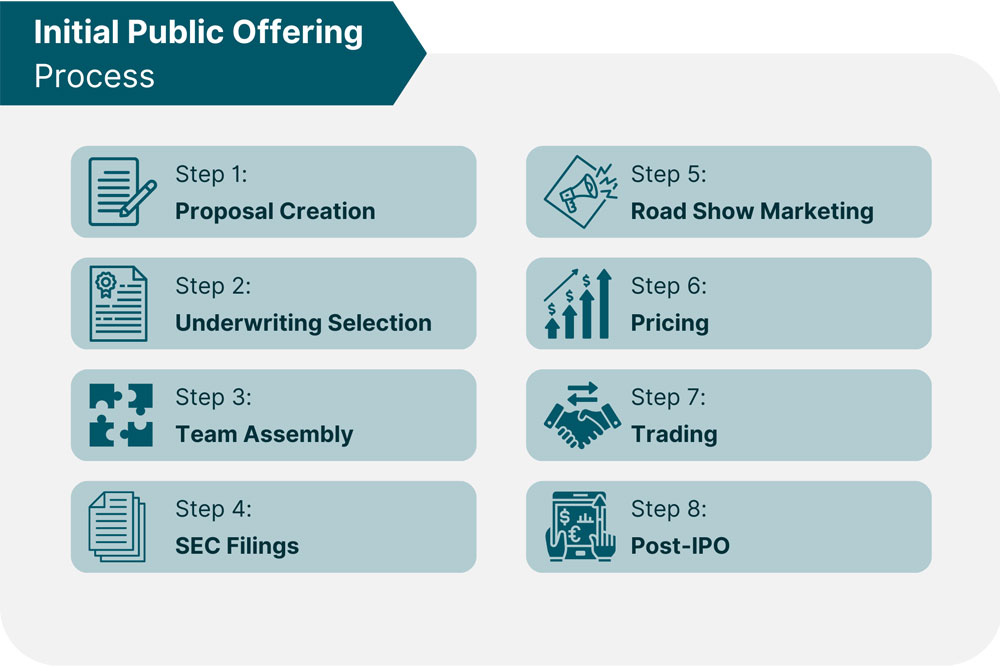An Initial Public Offering (IPO) is a complex process that involves several steps and requires careful planning and preparation. The following are the general steps to organize an IPO:

- Hire an investment bank: An investment bank can help with underwriting, pricing and marketing of the IPO.
- Prepare a registration statement: This is a document filed with the Securities and Exchange Commission (SEC) that contains information about the company’s financial performance, management, and business prospects.
- Conduct due diligence: This is an in-depth review of the company’s financial and operational performance, including an assessment of risk factors.
- Determine the offering price: This is done in consultation with the investment bank and is based on factors such as the company’s financial performance and the demand for the stock.
- Market the IPO: The investment bank will help market the IPO to potential investors, including institutional and retail investors.
- Allocate and price shares: The investment bank will allocate shares to investors and set the final price based on demand.
- Start trading: The stock will start trading on an exchange, such as the NYSE or NASDAQ, once the IPO is complete.
It’s important to note that these steps are only a general outline of the IPO process and may vary depending on the company’s specific circumstances. It’s also important to seek professional guidance from a qualified securities attorney, accountant, and investment banker throughout the process.







